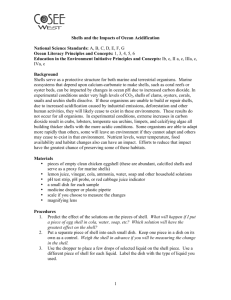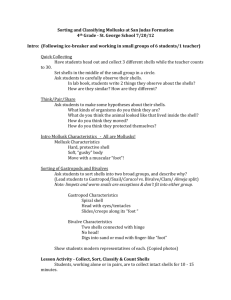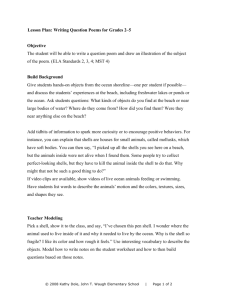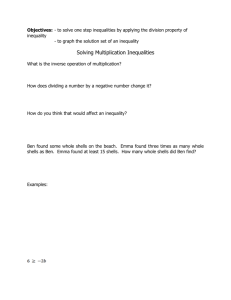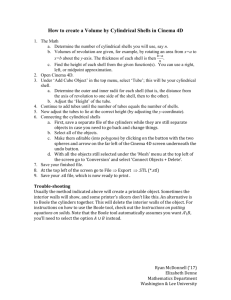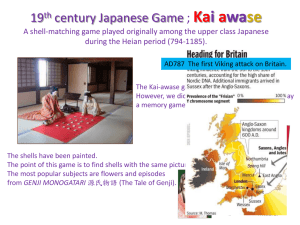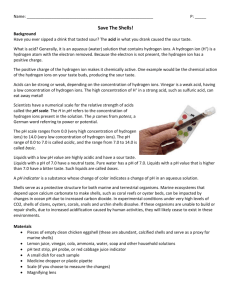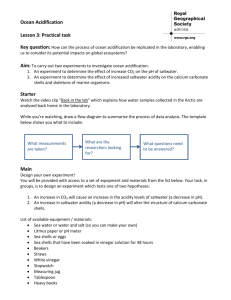Eggshell Acidity Experiment Original Source: http://www.cisanctuary
advertisement
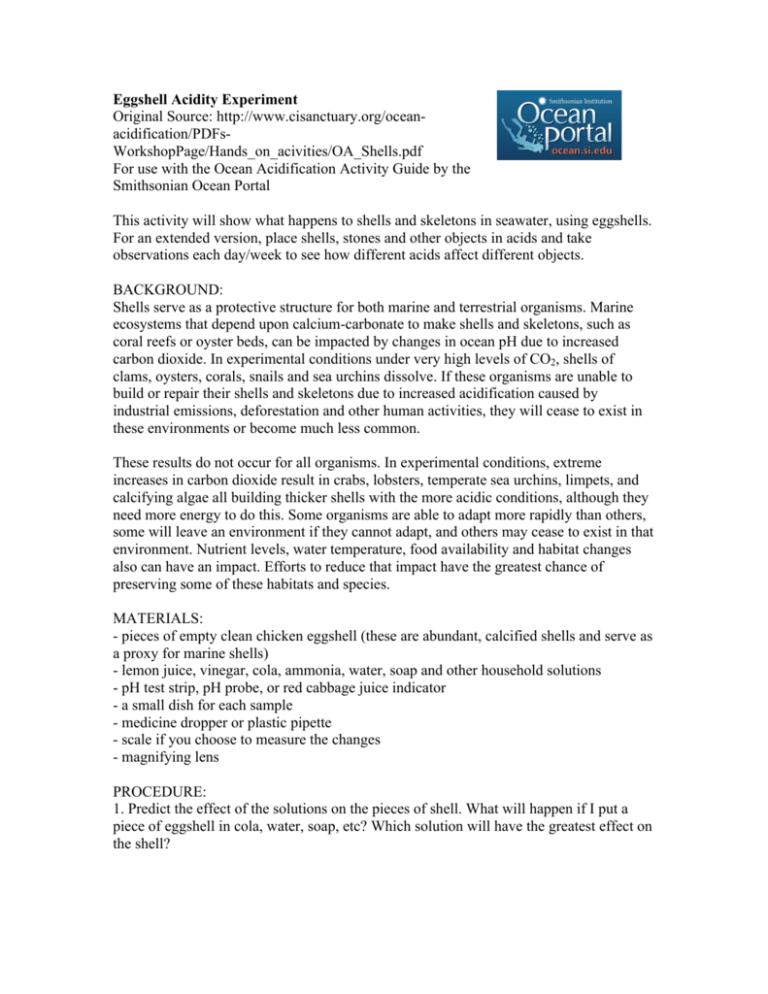
Eggshell Acidity Experiment Original Source: http://www.cisanctuary.org/oceanacidification/PDFsWorkshopPage/Hands_on_acivities/OA_Shells.pdf For use with the Ocean Acidification Activity Guide by the Smithsonian Ocean Portal This activity will show what happens to shells and skeletons in seawater, using eggshells. For an extended version, place shells, stones and other objects in acids and take observations each day/week to see how different acids affect different objects. BACKGROUND: Shells serve as a protective structure for both marine and terrestrial organisms. Marine ecosystems that depend upon calcium-carbonate to make shells and skeletons, such as coral reefs or oyster beds, can be impacted by changes in ocean pH due to increased carbon dioxide. In experimental conditions under very high levels of CO2, shells of clams, oysters, corals, snails and sea urchins dissolve. If these organisms are unable to build or repair their shells and skeletons due to increased acidification caused by industrial emissions, deforestation and other human activities, they will cease to exist in these environments or become much less common. These results do not occur for all organisms. In experimental conditions, extreme increases in carbon dioxide result in crabs, lobsters, temperate sea urchins, limpets, and calcifying algae all building thicker shells with the more acidic conditions, although they need more energy to do this. Some organisms are able to adapt more rapidly than others, some will leave an environment if they cannot adapt, and others may cease to exist in that environment. Nutrient levels, water temperature, food availability and habitat changes also can have an impact. Efforts to reduce that impact have the greatest chance of preserving some of these habitats and species. MATERIALS: - pieces of empty clean chicken eggshell (these are abundant, calcified shells and serve as a proxy for marine shells) - lemon juice, vinegar, cola, ammonia, water, soap and other household solutions - pH test strip, pH probe, or red cabbage juice indicator - a small dish for each sample - medicine dropper or plastic pipette - scale if you choose to measure the changes - magnifying lens PROCEDURE: 1. Predict the effect of the solutions on the pieces of shell. What will happen if I put a piece of eggshell in cola, water, soap, etc? Which solution will have the greatest effect on the shell? 2. Put a separate piece of shell into each small dish. Keep one piece in a dish on its own as a control. Weigh the shell in advance if you will be measuring the change in the shell. 3. Use the dropper to place a few drops of the selected liquid on the shell piece. Use a different piece of shell for each liquid. Label the dish with the type of liquid you used. 4. Watch what happens. What do you observe? Which liquids react with the shell first? 5. From your observation on the eggshell, what might be some consequences of ocean acidification for animals with shells? How might you test this hypothesis? EXTENSIONS: 1. Allow the pieces to sit, checking back on them through the day. If the liquid is safe to touch, touch the pieces of shell at the end of the experiment. 2. Dry and weigh the sample at the end and compare the weight before and after exposure to the solution(s). 3. Place real shells from the beach in the solutions and leave them there, taking observations and photos every week to keep track of the changes. EXPLANATION: This activity allows you to see firsthand the effects ocean acidification can have on calcifying organisms. When exposed to vinegar, which is an acid, the calcified eggshell produces CO2 bubbles as it dissolves. The shells and skeletons of live calcifying organisms can be similarly affected as the ocean acidifies. If shell-building organisms are affected then all of the organisms that depend on them will also be impacted. DISCUSSION QUESTIONS: - What happened to the eggshell? How about the seashell? What do you think will happen to the seashell after a few weeks in the cup? - Is the ocean as acidic as these liquids? - Create a list of ocean creatures that have similar shells. (e.g. mussels, clams, corals, snails, sea urchins, lobsters, etc.) What do you think will happen to their shells? Then what will happen to the animal? - Confirm that scientists expect that many animals' shells will dissolve, which makes them more likely to be eaten or crushed and grow more slowly. But emphasize that there is a lot of variation among different species that we don’t understand, and it's likely that some species will be able to adapt. (See background for this activity.) Scientists are still trying to figure that out, and could use their help!

